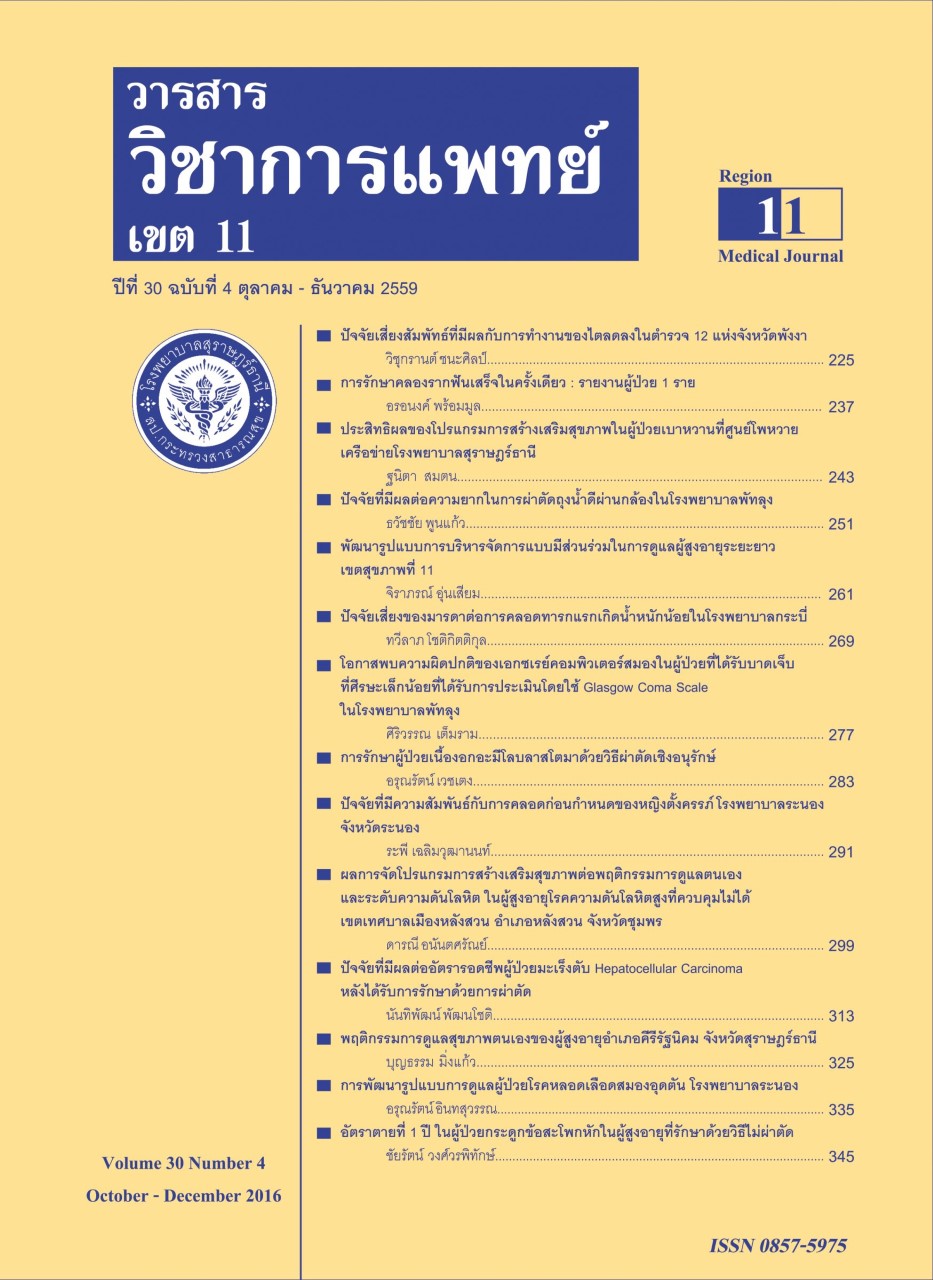Correlation between the Glasgow Coma Scale and cranial computed tomography imaging findings in the patients with mild head injury at Phatthalung hospital
Keywords:
Mild head injury, cranial CT scan, Glasgow coma scaleAbstract
Objective : To assess the correlation between the Glasgow Coma Scale (GCS) and cranial computed tomography (CT) imaging findings in the patients with mild head injury.
Method : A retrospective study was performed in 240 patients with mild head injury who were estimated the outcomes of head injury by Glasgow Coma Scale (13-15) and submitted to cranial computed tomographyat first 24 hours post trauma in Phatthalung hospital.
Result : The overall male to female ratio was 1.5:1. The range of the most common age is11-20 years. The most common causes were motorcycle accident (51.3%) and fall (27.9%). Abnormal CT findings were seen in 68 patients (28.3%), and were seen in the patients with GCS 13 = 62.5%, 14 = 39.3% and 15 = 25.5%. The most common abnormal intracranial CT findings were subdural hematoma (8.3%) and hemorrhagic contusion (7.9%).The most common related symptom with abnormal CT findings were posttraumatic amnesia (31.1%) and headache (31.0%).
Conclusion : Low Glasgow Coma Scales were considered as a severity risk factor in association with greater number of abnormal CT finding.
References
2. Bordignon KC, Arruda WO. CT scan findings in mild head trauma a series of 2000 Patients. ArqNeuropsiquiatr 2002; 60(2-A): 204-210
3. GhebrehiwetM, QuanLH, Andebirhan T. The profile of CT scan findings in acute head trauma in Orotta Hospital, Asmara, Eritrea. Journal of Eritrean Medical Association 2009; 4(1): 5-8
4. Miller EC, Holmes Jf, Derlet RW. Utilizing clinical factors to reduce head CT scan ordering for minor head trauma patients. The Journal of emergency
medicine. 1997;15(4): 453-7.
5. Cemil K, Gokhan A, Omer S, M Serkan Y, Ali D, Gulsüm K. Comparison of the Canadian CT head rule and the new orleans criteria in patients with minor head injury. World Journal of Emergency Surgery 2014, 9:31
6. Smits M,Dippel DW,Haan GG, Dekker HM, Vos PE, Kool DR, et al. Minor head injury:guidelinesfor CT –a multicenter validation study. RSNA.
2007;245:831-8.
7. TomarSS, WhargavaA, Reddy N,Significance of computed tomography scans in head injury. Open Journal of Clinical Diagnostics 2013; 3: 109-114.
8. Morgado FL, Rossi LA. Correlation between the Glasgow Coma Scale and computed tomography imaging findings in patients with traumatic brain injury. Radiol Bras. 2011; 44(1):35–41.
9. Nayebaghayee H, AfsharianT. Correlation between Glasgow Coma Scale and brain computed tomography- scan findings in head trauma patients. Asian J Neurosurg. 2016; 11(1): 46–49.
10. Farshchian N, Farshchian F, Rezaei M. Correlation between Glasgow coma scale and brain CT-scan findings in traumatic patients. J Inj Violence Res.
2012; 4(1): 44.





